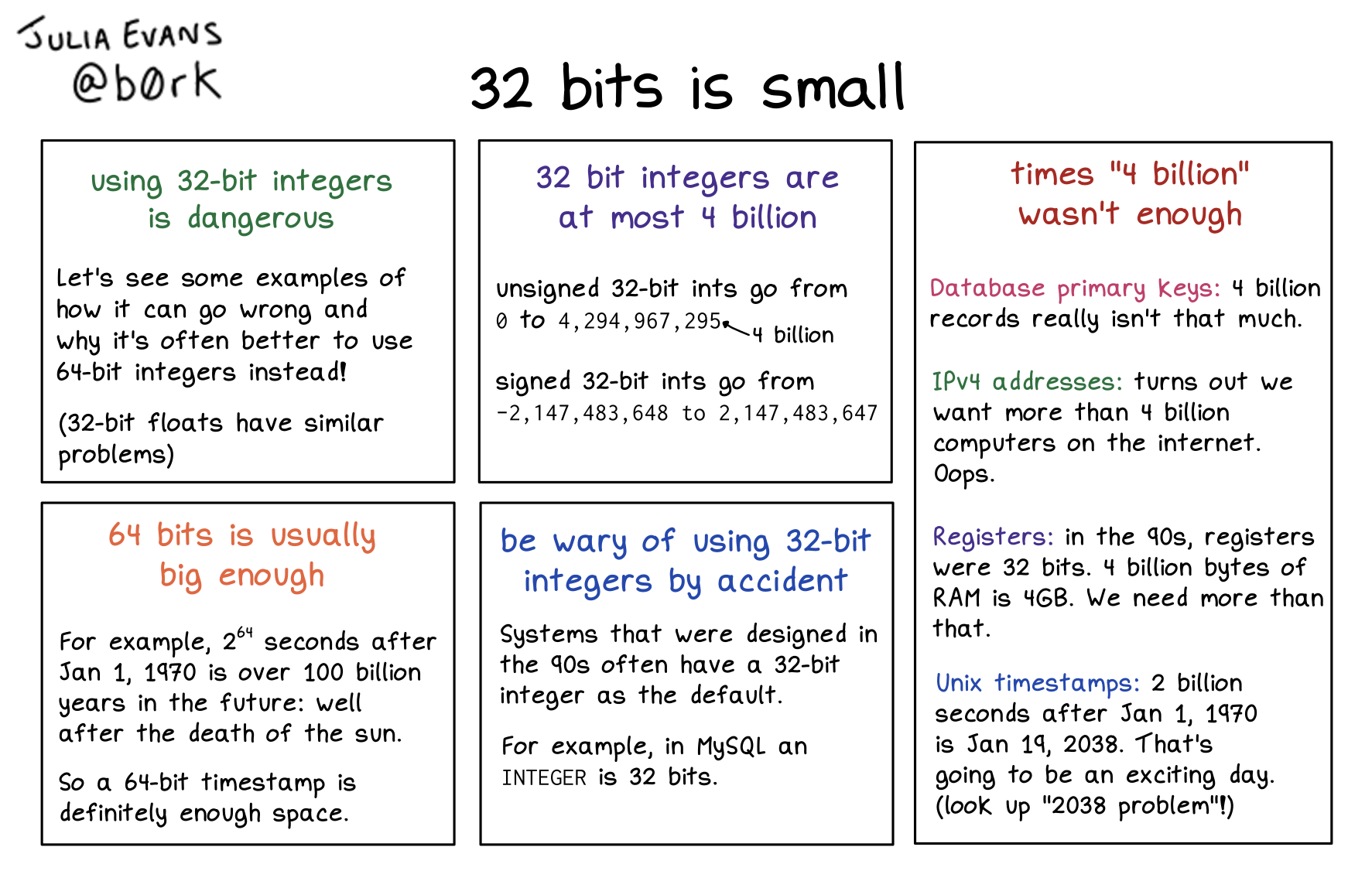
Here's a preview from my zine, How Integers and Floats Work! If you want to see more comics like this, sign up for my saturday comics newsletter or browse more comics!
 get the zine!
get the zine!
read the transcript!
panel 1: using 32-bit integers is dangerous
Let’s see some examples of how it can go wrong and why it’s almost always better to use 64-bit integers instead!
(32-bit floats are bad too, for similar reasons)
panel 2: 32 bit integers are at most 4 billion
unsigned 32-bit ints go from 0 to 4,294,967,295 (4 billion)
signed 32-bit ints go from -2,147,483,648 to 2,147,483,647
panel 3: times “4 billion” wasn’t enough
Database primary keys: 4 billion records really isn’t that much.
IPv4 addresses: turns out we want more than 4 billion computers on the internet. Oops.
Registers: in the 90s, registers were 32 bits. 4 billion bytes of RAM is 4GB. We need more than that.
Unix timestamps: 2 billion seconds after Jan 1, 1970 is Jan 19, 2038. That’s going to be an exciting day. (look up “2038 problem”!)
panel 4: 64 bits is usually big enough
For example, 2^64 seconds after Jan 1, 1970 is over 100 billion years in the future: well after the death of the sun.
So a 64-bit timestamp is definitely enough space.
panel 5: be wary of using 32-bit integers by accident
Systems that were designed in the 90s often have a 32-bit integer as the default.
For example, in MySQL an INTEGER is 32 bits.